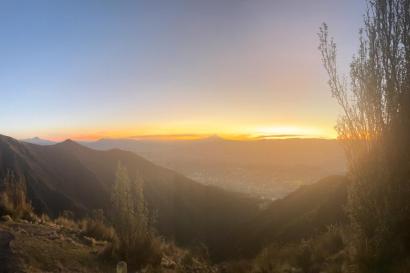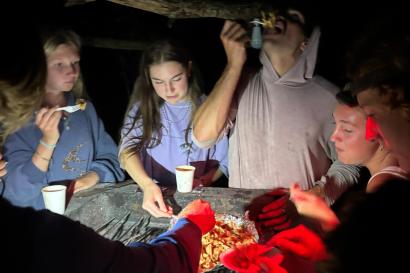After our month in Quito came to a close, we all piled on a big metal tube and launched ourselves to a little postage stamp in the middle of the Pacific Ocean known as the Galápagos Islands. Looking out of the window, Isla San Cristóbal, my home for the next three months, appeared out of nowhere. It was exactly like that scene in the 2002 American action classic and Best Picture Award winning movie Spy Kids 2: Island of Lost Dreams, where international super spy kids Juni and Carmen Cortez are cruising on a boat when the fog clears, uncovering a wondrous tropical island in the distance.
In reality, there are many notable similarities between Spy Kids 2 and the Galápagos Islands. The first visitors to the Galápagos called them “the enchanted islands” because of their supernatural, eerie feel and difficulty to navigate to them due to strong currents, not to mention the seemingly beastly animals that inhabited this land. In Spy Kids 2, after they arrived on the mysterious island, they discovered that it was populated with mutant, endemic animals created by a mad scientist who hid in trepidation from his creations. Carmen and Juni are horrifyingly captured by a flying pig and taken to its nest, but over time they began to understand and appreciate the intrinsic value of these animals. After they adapted the islands to fit their needs, humans also began to realize the value of the Galápagos (this whole issue is worth a different post).
We live in a time that defines the term “the enchanted islands” in a much different context than the original meaning, just as the spy kids did at the end of their momentous movie. This has allowed me to learn from the most fascinating environmental setting in the world. Already, my current class, called Strategic Planning for Natural Resource Management, has brought me to Isla Española and Isla Lobos, two practically untouched locations filled with inconceivable wildlife. I was fortunate enough to be able to hike and snorkel in both locations. In Isla Española, we landed at a sea lion nursery, which just about killed me with cuteness; stopped at a breeding area for Nazca boobies; and observed the brightest-colored marine iguanas in the Galápagos, among others. While we were snorkeling, the sea lions would come inches away from us to inspect and then would quickly dart away. Isla Lobos (lobo in Spanish means wolf but here refers to sea lions) really seemed like a misnomer because while there were 5-10 sea lions, there were hundreds of frigate birds which dominated the island. It was their nesting season, so you could see them building their nests and the males attracting females with their huge inflated red neck pouches. Below the surface here, we ran into schools of bullseye puffer fish and yellow-tail surgeonfish and saw some massive sea cucumbers and starfish as well.
Through writing this post, I have only come to conclude that I would have never actually needed to come to the Galápagos if I had just watched Spy Kids 2 every day during these 4 months.

Thomas Hotaling
<p class="MsoBodyText" style="margin-top:.4pt; margin-right:21.05pt; margin-bottom:.0001pt; margin-left:5.5pt"><span style="line-height:103%">Hello! My name is Thomas, and I’m from St. Louis, Missouri and currently am a second year at Case Western Reserve University. I like to think of myself as an avid outdoorsman, and you can often find me backpacking or just having fun outside, and I’m even a summer camp nature counselor. I'm currently studying environmental geology because rocks are the absolute coolest, and if you don't believe me I'd be happy to share my opinions with you.</span></p>








